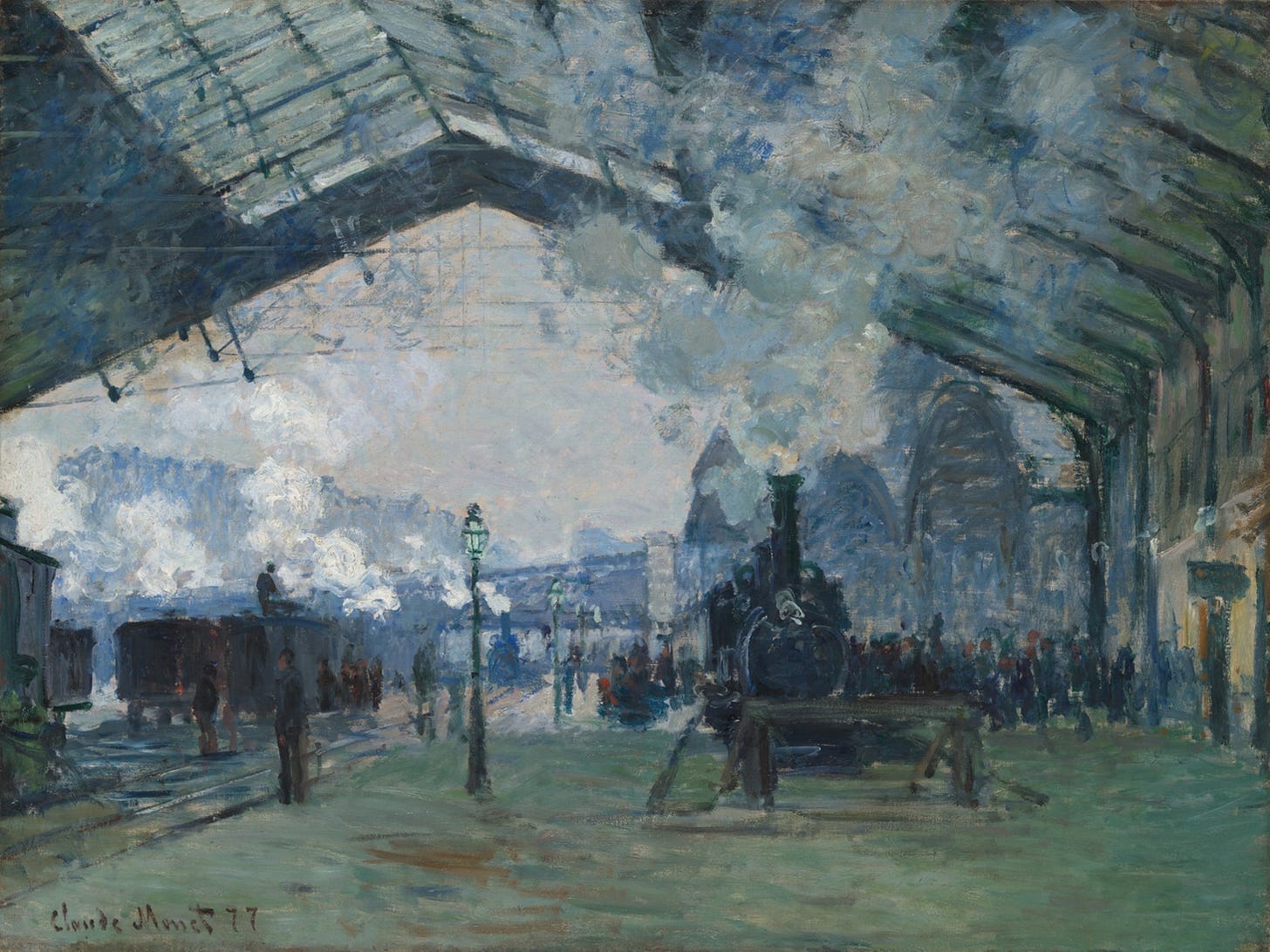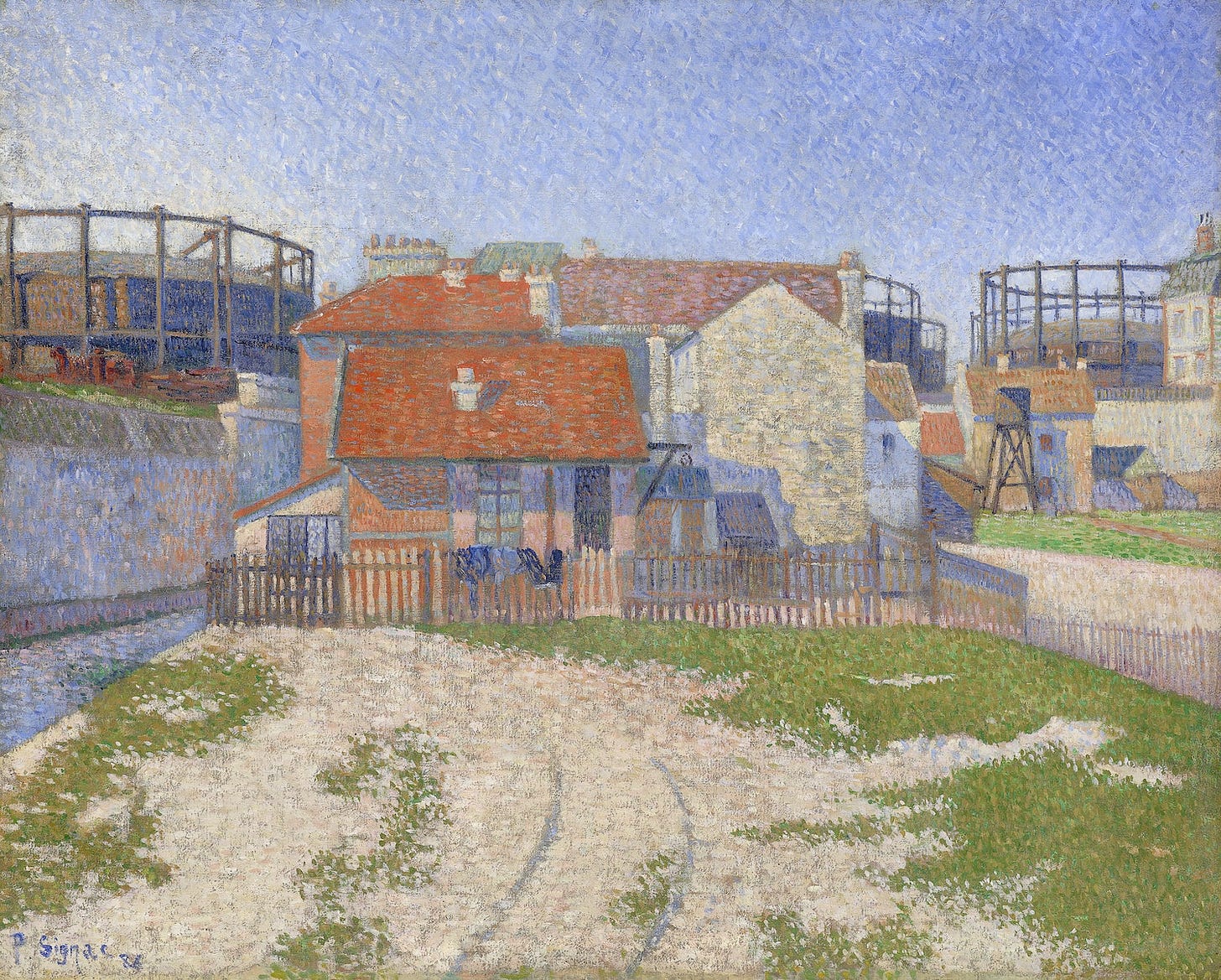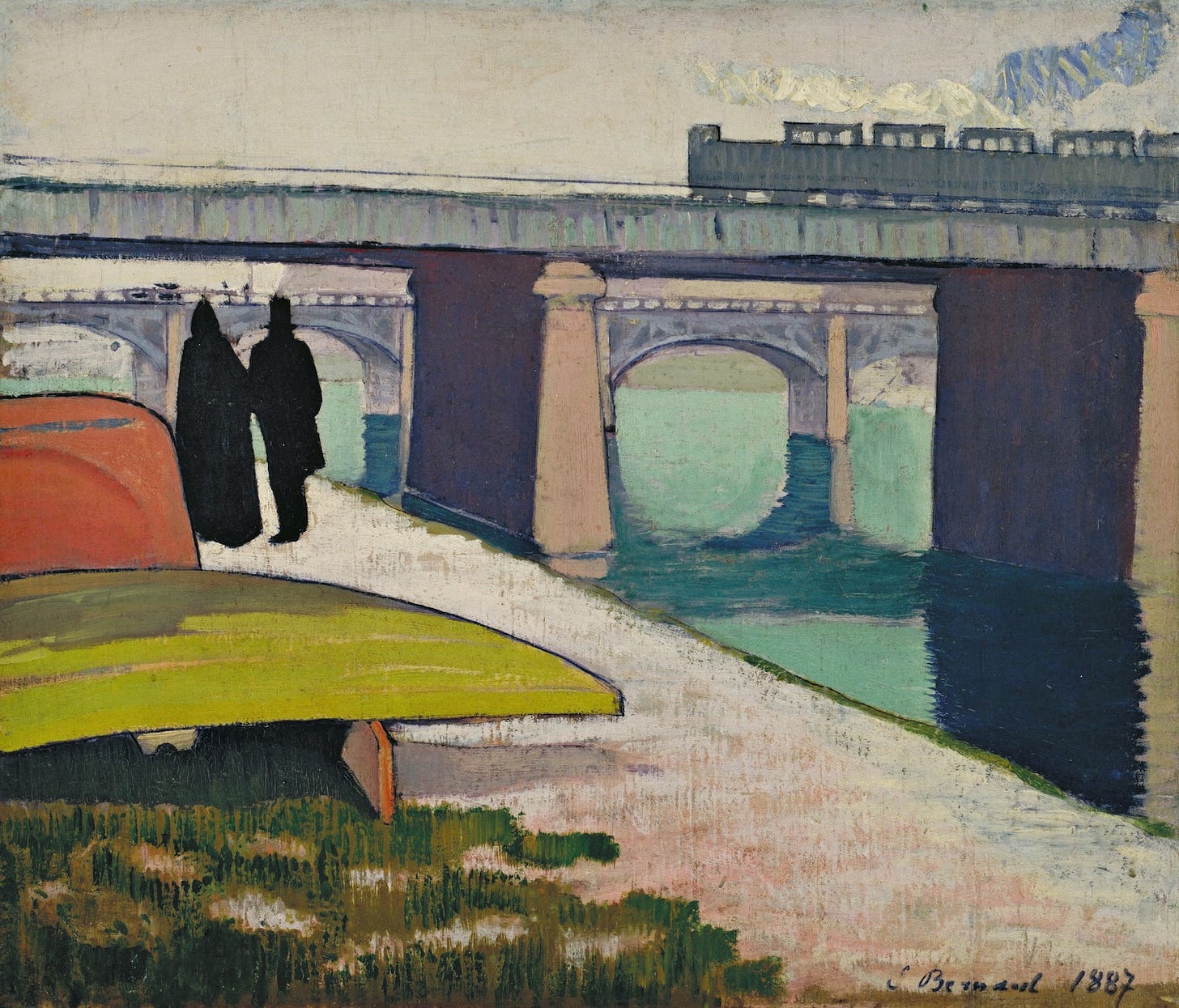A van Gogh exhibit that isn't
Art Institute exhibit goes until 9/4
Writing a quick one since this could be time-sensitive.
One perk of working for (a subsidiary of) a big, established employer in your area is that your employer donates large amounts of money to a bunch of cultural institutions and you get discounts. My wife and I took a day off yesterday to take advantage of my Art Institute1 discount. We wanted to catch their summer exhibit, called “Van Gogh and the Avant-Garde: The Modern Landscape”.
There’s a bit of a bait-and-switch going on here. The title says van Gogh, and I bet many people go into the exhibit thinking they’d see a lot of the bold-strokes van Gogh paintings that they’re familiar with. And they wouldn’t get that here.
The exhibit is really about 5 artists, including van Gogh, who spent a lot of time in the suburbs of Paris along the Seine in the 1880s, experimenting with brushstrokes and color. The other 4 artists are Georges Seurat, Paul Signac, Émile Bernard, and Charles Angrand. You can see why they highlighted van Gogh because most people probably don’t recognize any of these names other than Seurat2.
In other words, they made an exhibit ostensibly about van Gogh and snuck in Signac, Bernard, and Angrand. It was great.
A big reason I liked it is one of the reasons these artists went to the particular suburbs3 to paint—these were places where manufacturing facilities started popping up, because of good river transport and cheap land. The artists were trying to capture some of the visible changes happening because of industrialization.
This is my jam, as you can probably guess if you read my first post on Cleveland, and it’s why one of my favorites at the Art Institute is Monet’s painting of a train station.

Years ago, we’d seen an exhibit on van Gogh that did a good job covering all his career phases, so I don’t think I saw too much from him that was new to me here. And Seurat does what Seurat does4. So it was Paul Signac who I thought was the most consistently interesting.
Signac was close to Seurat and uses a similar pointillist technique, but some of the scenes that he painted look like they’re from my lifetime.
Émile Bernard also stood out. He’s the one person in the group who was pursuing a totally different concept called Cloisonnism, where he would use blocks of color with clear outlines.
Here, it’s not just the subject but also the style that seems like it could be from my lifetime.
Anyway, this was fun and if you’re in Chicago by September 4 (Labor Day), it’s worth checking out.
One last thing: we saw a long line to get into the Art Institute through the main entrance on Michigan, but we walked over to the Modern Wing entrance and it was a much shorter line.
What I’m listening to now
Recently, the universe seems to be conspiring to send me to Portland next summer, and Spotify took me to this album by Y La Bamba, a Portland-based Latin indie band.
Dibujos De Mi Alma is the highlight for me but it’s all good.
For people who’ve never been to Chicago: Art Institute of Chicago is the big art museum in Chicago. There’s an associated School of the Art Institute of Chicago.
People visiting the Art Institute are pretty likely to know Seurat, because one of the highlights of the collection is his A Sunday on La Grande Jatte — 1884.
Asnières, Clichy, Courbevoie, and La Grande Jatte, which is an island.
I did learn that Seurat died at the age of 31, younger than van Gogh (37), and that his Bathers at Asnières (not shown at the exhibit) clearly has smokestacks in the background.


